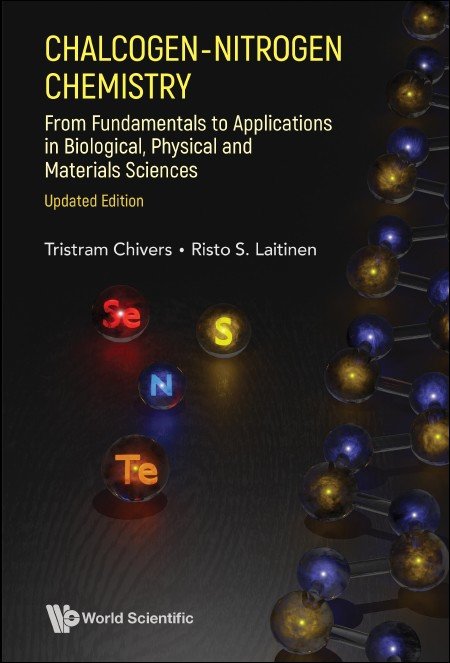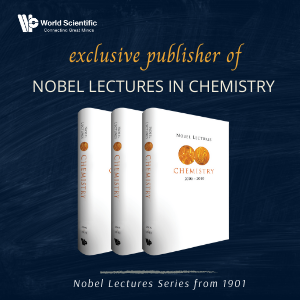Chalcogen–nitrogen chemistry involves the study of compounds that exhibit a linkage between nitrogen and sulfur, selenium or tellurium atoms. Since the publication of A Guide to Chalcogen–Nitrogen Chemistry in 2005, the emphasis of investigations of chalcogen-nitrogen compounds has advanced from a focus on fundamental studies to the development of practical applications, as indicated by the title of this new edition. Pharmaceutical applications of organic sulfur-nitrogen compounds include drugs for the treatment of various diseases, as well as probes for locating tumour cells. From a materials perspective, carbon-containing chalcogen-nitrogen heterocycles have applications in everyday devices such as LEDs and solar cells. A new technology based on binary sulfur nitrides is being used for fingerprint detection in forensic science. As a result, this book includes seven new chapters and updates the others with extensive literature coverage of developments since 2005 while retaining earlier seminal results. This comprehensive text is essential for anyone working in the field, and the four introductory chapters emphasise general concepts that will be helpful to the non-specialist. The treatment is unique in providing a comparison of sulfur, selenium and tellurium compounds. Each chapter is designed to be self-contained, and there are extensive cross-references between chapters.
Sample Chapter(s)
Preface: Updated Edition
Preface: First Edition
Chapter 1: Introduction
Contents:
- Introduction
- Formation of Chalcogen–Nitrogen Bonds
- Applications of Physical Methods
- Electronic Structures
- Binary Chalcogen–Nitrogen Neutral Molecules, Cations and Anions
- Short-Lived Chalcogen–Nitrogen Molecules: Matrix Isolation
- Acyclic S,N,O Anions and S-Nitrosothiols: Role in Biological Signaling
- Chalcogen–Nitrogen Halides: Synthetic Reagents
- Cyclic Chalcogen Imides: From Five- to 15-Membered Rings
- Acyclic Organic Chalcogen–Nitrogen Compounds
- Diamagnetic Five–Membered Carbon–Nitrogen–Chalcogen Rings: From Fundamentals to Functional Devices
- Diamagnetic Six-, Seven- and Eight-Membered Carbon–Nitrogen–Chalcogen Rings
- Paramagnetic Carbon–Nitrogen–Chalcogen Rings: Magnetic Materials
- Metal Complexes of Carbon–Nitrogen–Chalcogen Radicals: Coordination Modes
- Secondary Bonding Interactions in Chalcogen–Nitrogen Compounds: Supramolecular Assemblies
Readership: Inorganic, organic, physical, computational and biological chemists interested in the fundamental chemistry and applications of sulfur, selenium and/or tellurium compounds. Upper level undergraduates and graduate students in inorganic and/or organic chemistry courses.
"The diverse and rich chemistry of chalcogen nitrides is brought to life in this compelling book which provides insight and order in an area of chemistry that many find confusing. The combination of fundamentals and applications makes for a very readable and compelling account. This text should be on the shelf of all inorganic and many organic chemists."
J Derek Woollins FRSC FRSE
Professor Emeritus, University of St. Andrews, UK
"An in-depth look at how nitrogen can link to chalcogens, how chalcogen-nitrogen compounds are synthesized, and the properties of these compounds. It is a revised and updated version of the postgraduate text that I have used in teaching for years. This didactically elegant book skillfully spans from classical solid state and molecular chemistry to biochemistry with a steady focus on chalcogen-nitrogen species."
Axel Schulz
Professor of Inorganic Chemistry, University of Rostock, Germany
"Chivers and Laitinen have provided a timely, well-balanced and comprehensive overview of key advances made in chalcogen-nitrogen chemistry during the last 16 years. While developments in fundamental topics like synthetic methods, molecular and electronic structural studies are thoroughly covered, the book also takes on the challenge of addressing broad potential applications in medicine, biology, physics and materials science that is emerging for compounds containing chalcogen-nitrogen units. Thus the book will be an invaluable aid not only to teachers and students of inorganic, organic, physical and materials chemistry, but also to researchers with interests spanning any of these disciplines."
Richard T Oakley FRSC
Professor Emeritus, University of Waterloo, Canada
"Chalcogen-nitrogen chemistry is an important part of contemporary main group chemistry. This book by the world-recognized experts gives a comprehensive discussion of essential achievements of this chemistry and its applications, together with inspiration towards further research. With about 50 years of experience in the field, I highly recommend this book to the next generations of chemists."
Andrey V Zibarev
Professor of Chemistry, Russian Academy of Sciences, Russia
"This latest edition provides contemporary updates, highlighting the considerable body of work published in the intervening 16 years. The combination of fundamental and advanced topics not only make this an essential text for those working in the field of chalcogen-nitrogen chemistry but will undoubtedly be a strongly recommended text for senior undergraduate courses in main group chemistry."
Jeremy Rawson
Professor of Chemistry, University of Windsor, Canada

Tristram Chivers is Professor Emeritus of Chemistry at University of Calgary, Canada. He is an elected Fellow of the Royal Society of Canada, the Chemical Institute of Canada and the Royal Society of Chemistry, UK. He is the author of 450 peer-reviewed articles, 32 book chapters and two books: A Guide to Chalcogen-Nitrogen Chemistry (World Scientific, 2005) and Inorganic Rings and Polymers of the p-Block Elements with Ian Manners (Royal Society of Chemistry, 2009). He served as President of the Canadian Society for Chemistry (CSC) in 2000–2001. He received the Alcan Lecture Award of the CSC in 1987, the Royal Society of Chemistry Award (UK) for Main-Group Element Chemistry in 1993, the E.W.R. Steacie Award from the CSC in 2001, the Montreal Medal of the Chemical Institute of Canada in 2004, an Honourary Doctorate (DSc) from University of Oulu, Finland in 2006, and the ASTech Outstanding Leadership in Alberta Science Award in 2008. His primary research interests are in main-group element chemistry with an emphasis on the chalcogens. He received BSc, PhD and DSc degrees all from the University of Durham, UK.

Risto S Laitinen is Professor Emeritus of Chemistry at University of Oulu, Finland. He has been a member of Finnish Academy of Science and Letters since 2003. He has published 250 peer-reviewed articles, 30 popular articles, 15 book chapters, and has edited two books: Selenium and Tellurium Reagents — in Chemistry and Materials Science with Raija Oilunkaniemi (Walther de Gruyter, 2019) and Selenium and Tellurium Chemistry: From Small Molecules to Biomolecules and Materials with Derek Woollins (Springer, 2011). He is the Secretary of the Division of Chemical Nomenclature and Structure Representation, International Union of Pure and Applied Chemistry, for the term 2016–2023. He served as Chair of the Board of Union of Finnish University Professors in 2007–2010. In 2017, he received an award from the Finnish Cultural Foundation (North Ostrobothnia Regional Fund) for excellence in his activities for science and music. His research interests are directed to synthetic, structural, and computational chemistry of chalcogen compounds, focusing on selenium and tellurium. He received MSc and PhD degrees from Helsinki University of Technology (currently Aalto University).







